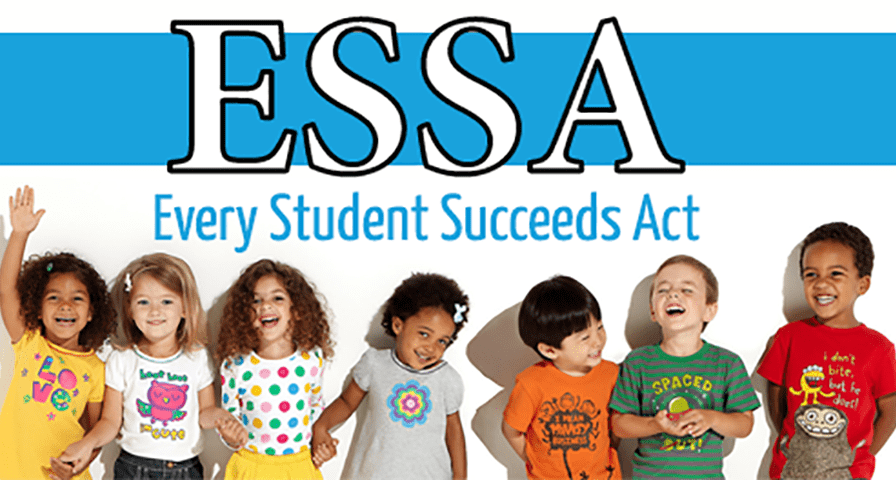The U.S. Department of Education will award more than $26 billion in funding for the Every Student Succeeds Act (ESSA) for the 2020-21 school year. ESSA provides federal funds for local school systems to add programs that support a well-rounded education.
Many administrators use their school district’s allocation to purchase technology such as the IHT ZONE wrist heart rate monitor. IHT’s heart rate technology qualifies for ESSA funding under Title IV, Part A, which funds programs designed to improve student health and wellness.
Understanding how a program qualifies for ESSA funding is the first step to applying for and winning funding. Administrators who have won ESSA funding for IHT technology follow a consistent strategy. They:
- Understand ESSA’s language and how a program qualifies,
- Know how to build a request, and who to submit it to, and
- What makes a proposal appealing to decision-makers.
Become Familiar With ESSA’s Specifics
ESSA allocates funding based on different criteria. Title I, which focuses on improving academic achievement among disadvantaged students, receives $17 billion. Title II, which addresses preparing, training, and recruiting high-quality teachers and leaders, gets $2.6 billion. Title IV, Part A provides $1.21 billion to states for programs that create a well-rounded education and promote safe and healthy schools, including student physical and emotional wellness.
Understanding how programs meet those criteria is the first step to building a successful proposal.
“You have to know the language,” McAllen (Texas) Independent School District Coordinator for Health and Physical Education Mario Reyna said. Reyna has won several ESSA grants from his district to add IHT ZONE heart rate monitors to his district’s middle schools.
IHT’s Eric Larson often works with school officials looking to add the technology. Larson pulls from his experience as the PE Coordinator at Denver Public Schools. Understanding guidelines, especially for ESSA, is key.
“Whether you’re a teacher or a coordinator, it’s important that you stay up-to-date on what is happening with ESSA Title IV, Part A,” he said.
Identify the District’s Decision-Makers
Regardless of the school district’s size, identifying the funding coordinator proves very helpful. Humble (Texas) ISD Coordinator of PE/Wellness Helen Wagner introduced herself to Director of State and Federal Programs Dr. Jamie Bryson before submitting a request. The request was eventually funded.
“It is critical to build an individual relationship in the special programs or title funding departments,” Wagner said. “Know who they are, introduce yourself, and explain your program. Some districts are big, and it means a lot to make that connection. They may not know who you are at first.”
In Irving (Texas) ISD, the director of federal funding made health and wellness leaders aware of funding, then helped Health and PE Coordinator Sandi Cravens shape her proposal.
“He laid it all out for me,” Irving (Texas) ISD Health and PE Coordinator Sandi Cravens said. She’s seen four proposals receive ESSA Title IV, Part A funding.
In McAllen, Reyna had become such a familiar face in the funding office that director Anjanette Gonzalez-Garza knew who to contact when she found ESSA money that hadn’t been allocated yet.
“She sent me an email that there was $20,000 leftover and what could I do with it?” he said. “Right away, I sent her a proposal.”
Keep Administrators Up-to-Date on Progress
 By learning ESSA’s specific requirements, Reyna created a template and could simply fill in pertinent details when the time to apply arrived. He said the time he spent researching IHT’s technology and how it positively impacts student wellness and academic readiness was worth it.
By learning ESSA’s specific requirements, Reyna created a template and could simply fill in pertinent details when the time to apply arrived. He said the time he spent researching IHT’s technology and how it positively impacts student wellness and academic readiness was worth it.
“It’s not as tedious as writing other grants that take longer and may not be as much money,” he said. “It is time-consuming, but it’s worth it because once the funding is there and you get the system you need, hopefully, you use it for a couple of years, so it was worth the wait and the patience.”
Reyna always has a proposal ready to go. He recommends that approach to other administrators who want to use ESSA funding to help their districts. The proposals provide specific details about how technology gets used.
After the proposals are approved, both Reyna and Wagner follow up by inviting their funding partners to see the technology in action.
“I invited Dr. Bryson to see the new product and she was delighted to get that chance,” Wagner said. “She loved that.”
Solidifying the buy-in from those who manage the funds can lead to future proposals also receiving funding.
“I’m blessed because my district truly believes in student wellness,” she said. “Make sure they see it all, the difference that what you’ve purchased makes for your students and your program.”
Seeking information about IHT and the Every Student Succeeds Act?


